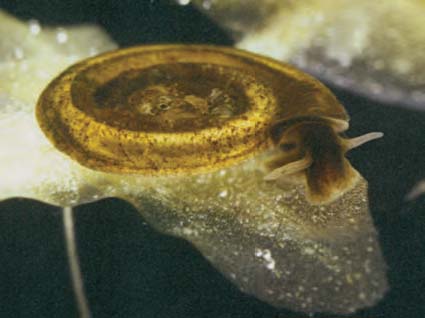Advice and helpThe Society is often approached by the Media, local trusts, member’s of the public, who all require advice on the conservation of molluscs. The Conservation Officer, with the help of the Society’s conservation and recording committee, provides advice, for example identifications of specimens for members of the public, assistance with identification and interpretion for Essex Wildlife Trust for a Segmentina nitida and guidance on the management of roman snail populations in the Cotswold. The latter case demonstrates the dilemma’s of conservation in an age that desires open access to information, as details of the location of the colony were published on the INTERNET, but fortunately when the sensitivity of the information was explained the exact location details were removed. Publicising conservation activityThe Society contribute a molluscan wildlife report to British Wildlife, in order to promote activities to a wider audience interested in natural history. In 2006, three reports were in February, June and October 2006 drawing attention to Roy Anderson’s revised list of the non-marine Mollusca of Britain and Ireland (Journal of Conchology, 38: 607 – 637), new distributional information from our recording schemes and details of pearl mussel recovery work being undertaken in Wales. Who will watch the small things that run the world? Invertebrate Link and Buglife (The Invertebrate Conservation Trust)In November 2006 the Conservation and Marine Recording Officers attended a conference titled ‘Who will watch the small things that run the world?’ This event held at the Natural History Museum, was attended by 120 representatives from over thirty organisations and focussed on the recruitment of the next generation of invertebrate specialists. The Conchological Society, in common with many other invertebrate and natural history societies, now has few young members and this lack of enthusiastic ‘new blood’ poses a worrying prospect for coming years. The conference brought together seven speakers from the media, education sector, publishers, specialist societies, conservation societies and others to explore underlying problems as well as possible solutions including Nick Baker. The relative rarity of young people with an active interest in invertebrates was attributed to a combination of many factors including:
Possible solutions were presented including changes to school curricula, the development of improved identification guides (including novel new electronic ‘palm-top’ devices), the use of outdoor trips planned specifically to introduce young people to the variety of invertebrate life and encouragement to make natural history collections. The issues raised by the conference are ones that the Conchological Socierty will need to address in the coming years. Biodiversity MattersIn earlier Mollusc Worlds (no 6: p. 10; no 8: p. 22) the UK BAP (Biodiversity Action Plan) review process was described. A preliminary list of the new BAP priority species was published by the Invertebrate Link BAP Working Group in summer 2006, but this omitted a number of molluscan BAP species that the Society felt were deserving cases (including from the original BAP list Vertigo geyeri, V. genesii, V. moulinsiana and Segmentina nitida). Following a short period of further ‘appeals’ (with revised proposal forms submitted by Martin Willing and Ian Killeen together with active support from Matt Shardlow of Buglife) a revised ‘final’ list emerged in late October 2006. This included all of the original BAP priority molluscs together with a further eight species, including the freshwater snails Omphiscola (=Lymnaea) glabra, Valvata macrostoma and Gyraulus acronicus; the freshwater bivalve Sphaerium solidum;. the land snails Truncatellina cylindrica and Vertigo modesta and the brackish lagoon snail Heleobia stagnorum. These species, together with all of the other BAP proposals, now go to the Priority Species and Habitats Review Working Group for further consideration. A more detailed resume of the BAP review outcomes will appear in the next issue of Mollusc World (March 2008). Going, Going, Gone…In 1996 The Independent newspaper published a small book titled ‘Going, Going, Gone’ (Schoon, N. 1996), which documented the story of Britain’s vanishing natural history. The publication included some molluscan details based upon the then newly produced BAP priority species list. In 2006 another identically titled book* appeared, but with a very different content. To produce this publication 100 conservation groups from around the world were each asked to nominate one animal or plant giving them most concern. The two page spread given to each species included a key facts box including the main threats faced by the chosen species and the what the reader could do to contribute towards the species recovery. Luckily the Conchological Society were approached and we nominated the little whirlpool ram’s-horn snail Anisus vorticulus (fig 1). Inclusion in this book is quite a coup allowing the Society not only to highlight the plight of a single species but also publicise its conservation work. (*Tait, M. 2006. Going, Going, Gone?. Think Books, London). |
Fig 1 Anisus vorticulus as figured in book ‘Going, Going, Gone’ (© Paul Sterry) |
Conservation officers report 2006
Issue
15
Page
14

